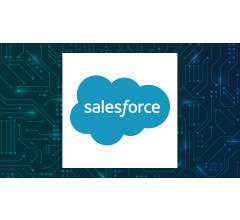Data Management (MDM) and CRM- DataScienceCentral.com


Data quality has become vital in the digital age, where data shapes decisions and business strategies. Customer Relationship Management (CRM) systems, crucial for managing customer interactions and fostering growth, depend heavily on quality data. Here, the fusion of Master Data Management (MDM) and CRM emerges as a potent force. This article explores their symbiotic bond, stressing the significance of data quality and the role of a data quality framework in upholding it.
Understanding Master Data Management (MDM)
Master Data Management (MDM) is a comprehensive approach to managing an organization’s critical data entities, commonly called master data. These entities encompass a range of data types, including customer details, product information, supplier data, and more. MDM ensures this master data remains consistent, accurate, and reliable across various systems, departments, and organizational processes.
The convergence of MDM and CRM
The convergence of Master Data Management (MDM) and Customer Relationship Management (CRM) represents a strategic alignment that amplifies the value of data across an organization. This integration transcends traditional data management boundaries, creating synergies that drive business growth, enhance customer relationships, and foster operational excellence. Let’s delve deeper into the multifaceted convergence of MDM and CRM.
Unified customer data landscape
- Centralized data repository: Integrating MDM with CRM systems creates a centralized repository where master data entities, such as customer profiles, product information, and sales data, are harmonized and consolidated. This centralized view ensures data consistency, accuracy, and accessibility across the organization.
- Real-time data synchronization: MDM and CRM integration facilitates real-time data synchronization, ensuring that any changes or updates made to master data in one system reflect immediately across all interconnected systems. This real-time synchronization enhances data currency and reliability.
Enhanced customer insights and analytics
- Holistic customer view: By combining master data from MDM systems with transactional and interaction data from CRM systems, organizations can build a holistic view of their customers. This comprehensive customer view enables deeper insights into customer behaviors, preferences, and lifecycle stages.
- Advanced analytics capabilities: The convergence of MDM and CRM data sets unlocks advanced analytics capabilities, including predictive modeling, customer segmentation, and trend analysis. These analytical insights empower organizations to anticipate customer needs, identify growth opportunities, and optimize marketing strategies.
Optimized customer engagement strategies
- Personalized marketing and sales: A unified MDM and CRM environment enables organizations to execute personalized marketing and sales campaigns by leveraging enriched customer data. Personalization based on accurate and comprehensive data enhances customer engagement, conversion rates, and revenue growth.
- Tailored customer service: Organizations can deliver more personalized and efficient customer service with a consolidated view of customer data. Customer service representatives have access to relevant customer information, enabling them to promptly address inquiries, resolve issues, and provide tailored solutions.
Efficient data governance and management
- Standardized data governance: MDM and CRM integration fosters standardized data governance practices by establishing clear data stewardship roles, quality standards, and management processes. This standardized approach ensures data integrity, compliance, and accountability.
- Automated data management processes: Integration between MDM and CRM systems enables automated data management processes, such as data cleansing, validation, and enrichment. Automation reduces manual errors, accelerates data processing, and enhances operational efficiency.
Scalability and flexibility
- Adaptable architecture: MDM and CRM integration offers a flexible and scalable architecture. This architecture adapts to evolving business needs and technological advancements. Organizations can easily extend their data management capabilities, integrate new data sources, and scale their operations without compromising performance.
- Future-proofing data strategy: The convergence of MDM and CRM establishes a robust foundation for future data initiatives, such as implementing advanced analytics, integrating emerging technologies like AI and IoT, and adapting to regulatory changes. This future-proofing ensures organizations remain agile and competitive in a rapidly evolving digital landscape.
Data Quality Framework: A Cornerstone for MDM and CRM
Implementing a robust data quality framework is pivotal for ensuring high-quality data in both MDM and CRM environments. A data quality framework outlines the policies, standards, procedures, and tools required to maintain data accuracy, completeness, and consistency.
Within the realm of MDM and CRM, a data quality framework facilitates:
- Data governance: Establishing clear roles, responsibilities, and processes for data management.
- Data cleansing and validation: To maintain data integrity, identify and rectify data errors, inconsistencies, and duplicates.
- Data monitoring and reporting: Continuous monitoring of data quality metrics, report generation, and performance tracking.
- Compliance and security: Ensuring adherence to data privacy regulations and implementing security measures to safeguard customer data.
Benefits of MDM and CRM Integration
The integration of Master Data Management and Customer Relationship Management systems has numerous benefits that extend beyond data quality. Here’s a detailed exploration of the advantages organizations can reap from this strategic alignment:
1. Improved Data Accuracy and Consistency
- Unified data view: MDM and CRM integration ensures a consistent view of customer data across the organization. This unified view eliminates data discrepancies and ensures all customer-facing systems access accurate and up-to-date information.
- Reduced data duplication: With integrated MDM and CRM systems, duplicate data entry and inconsistencies are minimized, improving data accuracy and reliability.
2. Enhanced Customer Experience
- Personalized interactions: A unified view of customer data enables organizations better to understand customer preferences, behaviors, and needs. This understanding allows for more personalized marketing campaigns, for example.
- Improved customer engagement: Consistent and high-quality data empowers organizations to engage with customers more effectively across various touchpoints, enhancing customer satisfaction and loyalty.
3. Operational Efficiency and Cost Savings
- Streamlined processes: Integration between MDM and CRM systems streamlines data management processes, reduces manual data entry, and eliminates data silos. This efficiency translates into faster response times, reduced errors, and lower operational costs.
- Optimized resource allocation: By automating data-related tasks and reducing manual interventions, organizations can allocate resources more effectively, focusing on strategic initiatives that drive business growth.
4. Data-Driven Decision Making
- Informed insights: A unified and consistent data source gives organizations reliable insights into customer behavior, market trends, and business performance. These insights enable data-driven decision-making, fostering agility and adaptability in response to changing market dynamics.
- Predictive analytics: Integrated MDM and CRM data sets enable advanced analytics and predictive modeling. Organizations can leverage these capabilities to proactively forecast customer trends, identify opportunities, and mitigate risks.
5. Compliance and Risk Mitigation
- Data governance and compliance: MDM and CRM integration facilitates robust data governance practices, ensuring adherence to data privacy regulations. This compliance minimizes legal risks and enhances organizational trustworthiness.
- Security enhancements: A unified data management approach strengthens security measures. These security enhancements protect sensitive customer information from unauthorized access and potential breaches.
Conclusion
Master Data Management (MDM) and Customer Relationship Management (CRM) are integral to a holistic data management strategy. Their integration and the implementation of a robust data quality framework are essential for maintaining high-quality master data that drives informed decision-making, fosters meaningful customer relationships, and propels business success in a data-driven world. Organizations prioritizing MDM and CRM integration and investing in data quality initiatives are better positioned to navigate the complexities of the modern business landscape and capitalize on the opportunities it presents.



